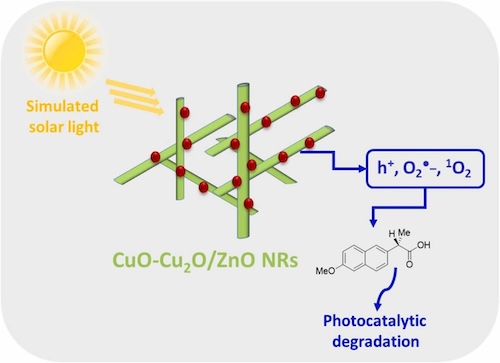Ask for a reprint
email :
* Give your email
2024
ACL
|
Mouna Ibn Mahrsi, Bilel Chouchene, Thomas Gries, Vincent Carré, Ghouti Medjahdi, Fadila Ayari, Lavinia Balan, Raphaël Schneider, '0D/1D CuO-Cu2O/ZnO p-n heterojunction with high photocatalytic activity for the degradation of dyes and Naproxen', J. Env. Chem. Eng. 12 113072 (2024) doi:10.1016/j.jece.2024.113072
The development of highly active photocatalysts with broad spectrum response is of paramount importance for photocatalytic applications. Herein, heterostructured CuO-Cu2O/ZnO photocatalysts were prepared in a single step and under mild conditions using a photodeposition process which allows to deposit CuO-Cu2O particles with an average size of ca. 2.4 nm on the surface of ZnO nanorods. The p-n heterojunction built between CuO-Cu2O and ZnO allows to increase both the visible light response of the photocatalyst and the charge separation. The CuO-Cu2O(10%)/ZnO catalyst exhibits the highest activity for the degradation of dyes (Rhodamine B and Remazol Brilliant Blue R) and of Naproxen under simulated solar light irradiation. Based on scavenging experiments, holes, superoxide radicals O2●- and singlet oxygen 1O2 are the dominant species involved in the photocatalytic degradation and a mechanism is proposed. Due to its high stability and photocatalytic performance in various water matrices, the CuO-Cu2O(10%)/ZnO nanohybrid is of high potential for the large scale remediation of organic pollutants in wastewater.
|

|